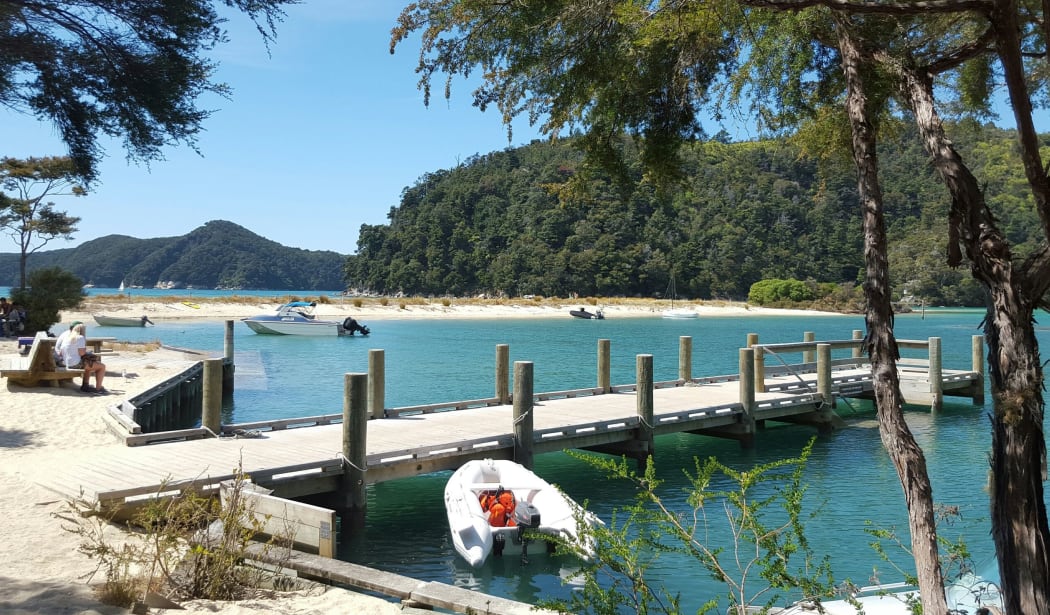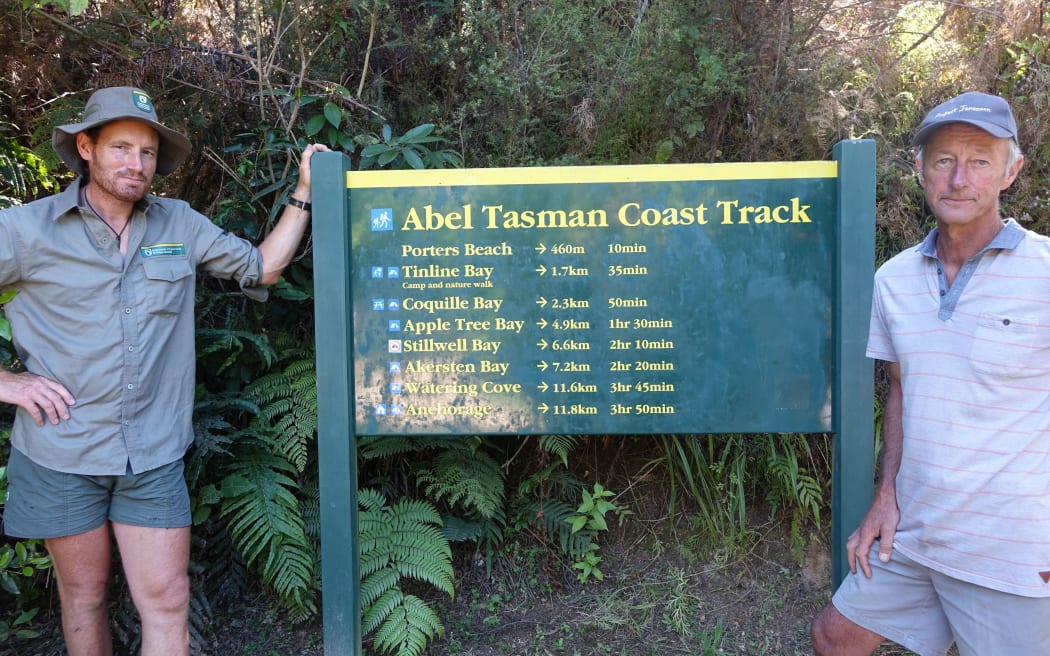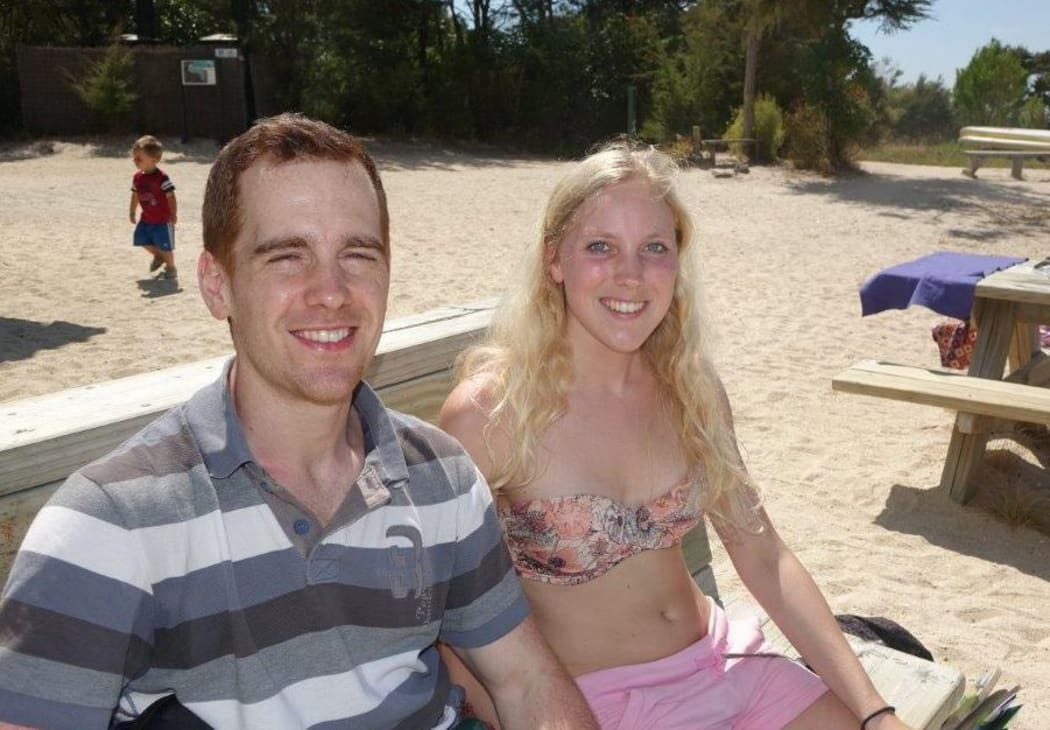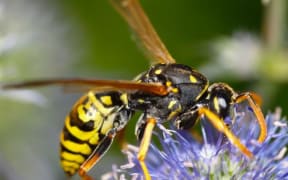A nationwide wasp control programme using a new type of poison has started in the Abel Tasman National Park, north-west of Nelson.

Torrent Bay lagoon in Abel Tasman National Park. Photo: RNZ / Tracy Neal
The pests are said to cost the New Zealand economy more than $130 million a year in lost agricultural revenue, through damage to bees and other important insects.
The Department of Conservation (DoC) said the control programme, using a protein bait called Vespex, was the result of a successful pilot programme at conservation sites in the South Island last year.
Spokesperson Leigh-Anne Wiig said the pilot reduced wasp activity in the targeted areas by more than 95 percent.
The first major control programme is now being carried out along 46km of the Abel Tasman coastal track, around 17 campsites and huts, plus large tracts of land at various sites.
The hard-hitting eradication programme is being carried out by DoC, and funded by local privately-funded trust Project Janszoon, and the Abel Tasman Foreshore Scenic Reserve Fund.
DoC said past attempts at getting rid of wasps had been difficult and time consuming, but the breakthrough this time was Vespex.
DoC biodiversity ranger John Henderson said bait stations dotted through the park were specially designed for wasps to easily access the poison.
Mr Henderson said laying the bait traps was no walk in the park, largely due to the steep terrain that had to be tackled.
The bait contained the insecticide fipronil, which was harmful to wasps but harmless to bees, simply because it did not attract them.

DOC biodiversity ranger John Henderson and Project Janszoon ornithologist Peter Gaze Photo: RNZ / Tracy Neal
Project Janszoon ornithologist Peter Gaze said wasps gathered the bait and took it back to their nests, which were then "history in a matter of days".
Mr Gaze said wasps were a problem because they competed with native birds for honey dew, nectar and invertebrates.
In greater numbers they also preyed on the chicks of native birds which communities around the country were working hard to restore.
The wasps could also be a potential hazard to the hundreds of thousands of tourists who visited New Zealand's conservation areas each summer. Mr Gaze said they were a pest for visitors.
"At the moment visitors to this little piece of paradise can really have their holiday upset by encounters with wasps - either accidental by pushing through a nest or just not watching their jam sandwich close enough when they have a picnic and the results can be devastating."
John Henderson said tourists had needed emergency treatment in the past from wasp stings, with some developing anaphylaxis - a serious, potentially life-threatening allergic response.
He said staff carried portable adrenaline medication in case they had to administer first aid care.

Tourists Sebastiaan de Bruin and Annika Vanlaerhoven enjoing a picnic lunch while swatting wasps at the Torrent Bay lagoon, Abel Tasman National Park. Photo: RNZ / Tracy Neal
Tourists Sebastiaan de Bruin and Annika Vanlaerhoven, from the Hague, had been on the beach at Torrent Bay and were among around a dozen people swatting wasps away from their picnic lunch.
They said the wasps did not worry them too much, except for when they sat down to eat.
The best way to control them was not to bother them first, they said.
Australian visitors Ray and Allie Oweis, from the hills area behind Sydney, were less concerned. They were happy to be hiking in an area absent of things that really worried them, like snakes.
DoC expected wasp control around the country to build over the coming years, now that the Vespex bait was more widely available.


